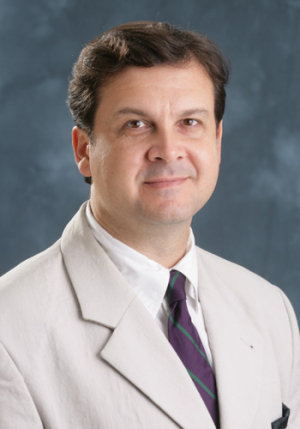For pioneering research in the areas of crystallization and protein aggregation, Peter Vekilov, professor of chemical and biomolecular engineering, has been named a fellow of the American Physical Society.
“This fellowship acknowledges the significance of our work, specifically the discovery of new mechanisms and phenomena in crystallization and aggregation research,” he said. “It is an honor to be named a fellow.”
Vekilov’s work has had a profound impact in the biological physics community. He discovered the two-step nucleation mechanism, dubbed the Vekilov mechanism, whereby crystal nuclei form inside pre-existing dense liquid droplets. The impact of this finding will allow biomedical researchers to gain a fuller understanding about how pathogenic crystals of proteins and small molecules form in the body. Such discoveries may eventually lead to the development of novel treatments for aggregation diseases, such as sickle cell anemia, cataracts, gout and possibly Alzheimer’s.
“It is very important to be able to control nucleation,” he said. “If we can control it, we can begin finding ways of eliminating the propagation of these crystals.”
Furthermore, Vekilov has also been able to capture and document one of only three mechanisms ever discovered on how molecules attach themselves to crystals. The mechanism was discovered using insulin crystallization; as a model, insulin crystallization in the human pancreas is an essential part of the biosynthesis of insulin. Controlling this insulin crystallization, according to Vekilov, is a potential pathway toward the treatment of diabetes.
Vekilov holds an M.S. in chemistry from the M.V. Lomonosov Moscow University and a Ph.D. in chemistry from the Russian Academy of Sciences’ Institute for Crystallography. His research has been featured on the cover of Scienceand published in other scientific journals such as Nature, The Proceedings of the National Academy of Sciences, Physical Review Letters, The Journal of the American Chemical Society, Solid State Physics, The Journal of Molecular Biology and others.
